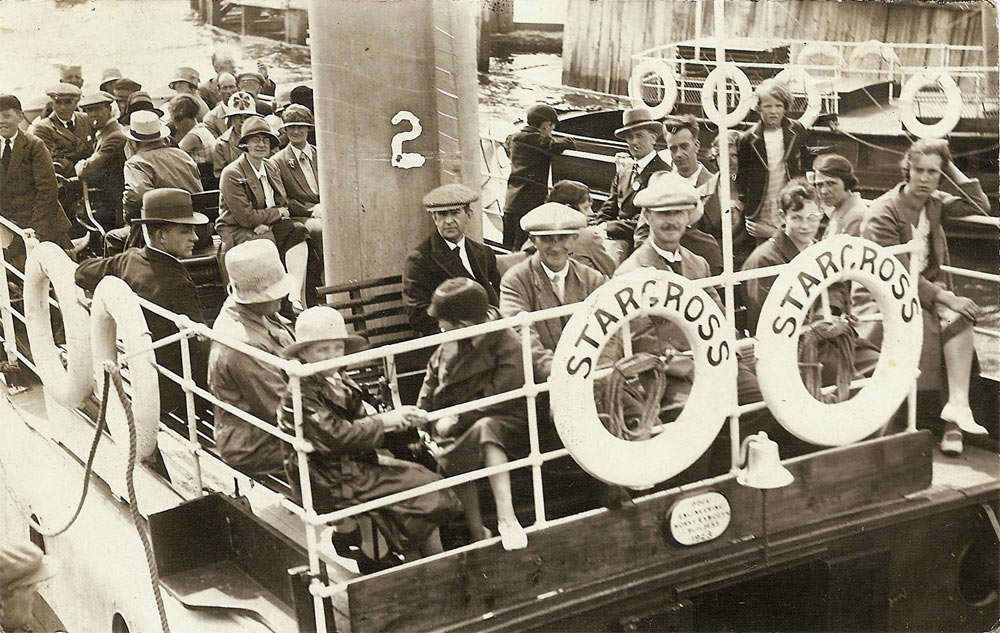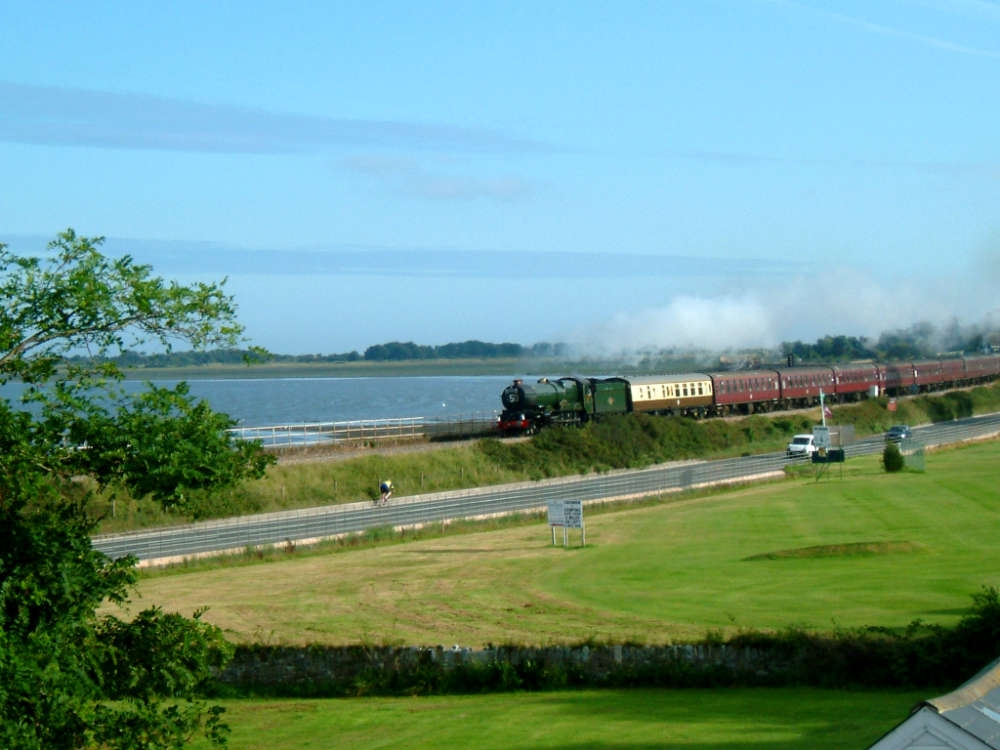THE TIMES - Saturday, 30th March 2024
The book that puts the Starcross Western Institution into its context.
The Undesirables by Sarah Wise review — Britain’s own ‘Magdalene Laundry’ scandal
Under the 1913 Mental Deficiency Act, unmarried mothers were classified as ‘moral imbeciles’ and had their babies taken away
Alice O’Keeffe
Saturday March 30 2024, 12.01am, The Times
Dolly, who had a baby aged 14, spent her life in Moor Park psychiatric hospital
IAN BEESLEY
You will have heard about Ireland’s Magdalene Laundries, in which “fallen women” were incarcerated and put to hard labour between the 18th and late 20th centuries. The Irish government issued a formal state apology for these institutions in 2013 and set up a compensation scheme for survivors. The laundries have since been the subject of many books and films, including Claire Keegan’s Booker-shortlisted novella Small Things Like These.
How surprised would you be to discover that a comparable system operated in Britain during the 20th century? A system that has not been acknowledged nor apologised for, let alone compensated for? If the answer to that is “very surprised” then brace yourself for The Undesirables, Sarah Wise’s sprawling, shocking study of the impact of the 1913 Mental Deficiency Act.
This appalling piece of legislation, which remained in force until 1959, involved a system of institutions in which anybody judged to be “feeble-minded” or a “moral imbecile” could be incarcerated indefinitely, with no recourse to appeal. Its targets were almost invariably poor people. In the late 1940s, 50,000 were detained in such institutions, with no psychiatric diagnosis, no treatment, no conviction and no time limit to their detention. About 30 per cent of these people had been detained for 10 to 20 years; 5 per cent for more than 30 years. Some of those featured in this book were detained when they were toddlers as young as three; some were released only in the late 1990s, having been effectively institutionalised and locked up for their entire adult lives.
Take David Barron, who was sent to the Mid Yorkshire Institute for the Mentally Defective (later known as the Whixley Colony) in the late 1930s, when he was in his early teens. There was nothing wrong with Barron other than rotten luck: he was an orphan, and had been mistreated by his foster mother. The solution was to classify him as mentally defective and lock him up.
Since he was intellectually perfectly normal, he was classified as a “high-grade defective”, meaning that he could do the hard labour of maintaining the building and caring for the more disabled inmates. He worked in the “sewing room” and looked after a boy called Trevor who was disabled and needed intensive personal care, “more or less a full-time job”. He was not allowed to fraternise with the opposite sex or form a relationship. Barron was not released until he was 30.
Having been judged incapable of leading independent lives or contributing to society, inmates of the residential “mental deficiency colonies” such as Whixley were, paradoxically, found to be useful labour. In Whixley’s laundry, they worked six days a week cleaning linen and clothes for the local community and earned between halfpence and fourpence, which they could spend on sweets. Other colonies supplied cut-price labour to the agricultural sector, picking fruit. During the Second World War, when many staff were redeployed elsewhere, one colony ended up being entirely run by the inmates. “In theory this should be full of pitfalls; in practice, it seems to work amazingly well,” an internal memo recorded. When convenience dictated, these people weren’t apparently so deficient after all.
Many of those detained — it is unclear from this book how many — were poor women who had given birth out of wedlock. Indeed, under the terms of the act “any female in receipt of poor relief at the time of giving birth to an illegitimate child” could be classified as a moral imbecile, separated from her child and locked away. In 1972, three women in their sixties and seventies were found at St Catherine’s Hospital for the Mentally Handicapped near Doncaster. Each had been put away in adolescence in the 1920s for having a baby out of wedlock under the same “moral imbecile” clause. All three had lost contact with anyone on the outside who once knew them. “All I want now is a little job doing domestic work,” one of them said on her release.
• 25 best history books: crumbling empires, heads rolling and more
“Dolly”, a lady who spent her life in Moor Park psychiatric hospital, had been detained under the same legislation because she had a baby aged 14. She was still there, an elderly lady, when Moor Park closed in 1996.
There was a reason why mothers were particularly targeted by the act: its origins lay in the eugenics movement of the early 20th century. Alarmed by the poverty in the slums of Britain’s big cities, a group of keen social Darwinists decided that the best solution would be to prevent the poor from breeding. The concept of “survival of the fittest” was taken to mean that they had landed at the bottom of the social heap for a reason. As the eugenicist George Mudge put it: “The stunted individuals are not the product of a one-roomed tenement, but the one roomed-tenement is an expression of [their] inherent incapacity.”
The Eugenics Education Society was founded in 1907 and found a sympathetic ear in Winston Churchill, who once wrote that “the improvement of the British breed is my aim in life”. Influenced by an American book called The Sterilisation of Degenerates, Churchill, when he was home secretary in the Asquith government, advocated “a simple surgical operation so the inferior could move freely in the world, without causing much inconvenience to others”.
Sterilisation was mercifully rejected by Whitehall, so the society lobbied for permanent detention of the feeble-minded into sex-segregated colonies to “regularise the lives, and if possible, prevent the increasing propagation of half-witted people”. The 1913 bill found support in some surprising quarters. The working-class Labour MP Will Crooks observed that such people “are almost like human vermin. They crawl about … polluting and corrupting everything they touch”.
Such debates were an inspiration to Nazis in Germany, who compulsorily sterilised 200,000 to 400,000 “defective” Germans between 1934 and 1939. As Leon Whitney, of the American Eugenics Society, observed: “Many far-sighted men and women in both England and America have been working earnestly towards something very like what Hitler has now made compulsory.” Ironically, considering its parallels with the Irish system, one consistent opponent to the mental deficiency legislation was the Catholic Church, which always argued against its “gross materialism”.
Wise’s is in some ways a frustrating book. The author of well-received social histories of the Victorian period, she has made a first foray into the more recent past here and seems — understandably, perhaps — overwhelmed by the material. I longed for her to focus more sharply on, for example, unmarried mothers and bring their stories to life. Instead, she roams far and wide, from eugenics experiments in America to the detention of autistic people today.
Part of the problem seems to have been that the inmates of mental deficiency colonies were detained for so long and were so effectively silenced and marginalised that it has not been easy for her to access their stories. “I have only been able to scrabble together a few of these case histories,” she writes. “The rest is silence.”
The Undesirables: The Law That Locked Away a Generation by Sarah Wise (Oneworld, 352pp; £22). To order a copy go to timesbookshop.co.uk. Free UK standard P&P on orders over £25. Special discount available for Times+ members





























